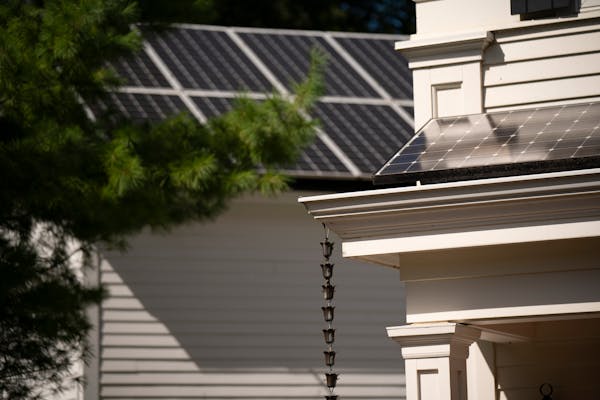More changes could be in store for Minnesota's large community solar garden program after Xcel Energy predicted sharp price increases for customers, who bear the cost of energy from the farms even if they don't subscribe to one.
The cost increase has renewed criticism of community solar by Xcel and some lawmakers. The jump has also prompted questions from state regulators even after the program was revamped by the Legislature earlier this year.
"I'm concerned about the costs and the impact on Xcel's rates," said Joe Sullivan, vice chairman of the Minnesota Public Utilities Commission (PUC), during a November commission hearing.
Xcel forecast the overall program cost to rise to $329 million from $287 million in 2023 and $184 million the year prior. But a significant portion of the charge that falls solely on its Minnesota customers has increased even more.
The forecast is the latest flashpoint in a years-long debate over whether benefits from the program outweigh the price.
Why the cost is rising
Approved by Minnesota lawmakers in 2013, community solar allows people to subscribe to a small solar farm typically run by a for-profit developer. Xcel, which doesn't profit, is required to buy the power and pay a bill credit to subscribers in return for their share of energy.
It was meant as an alternative to rooftop solar, and supporters say the program has fostered solar development while helping people participate in the energy transition.
There were more than 860 megawatts of community solar on Xcel's system in December 2022, which, for now, is far more than solar owned by the utility.
Still, solar gardens have critics who note more than 80% of bill credits flow to businesses and other non-residential customers. They also argue the program is simply too expensive.
Solar garden costs are passed down to all of Xcel's customers. But bill credits earned by garden subscribers are "more than three times the cost per-megawatt-hour than gas, solar and wind" Xcel bought through power-purchase agreements, said Michelle Rosier, manager of regulatory analysis at the PUC, during a November legislative hearing.
A small portion of solar garden costs are shared by customers across Xcel's Upper Midwest territory. But costs higher than the price for energy on the open market are solely paid by Minnesota customers. Xcel predicts Minnesota ratepayers will shoulder 93% of the $329 million price tag in 2024.
That includes $249 million in forecast "above-market" costs for 2024, which are up sharply from $100 million in 2022 and an expected $189 million this year. Xcel says a typical residential customer would pay about $7 a month for the program in 2024, compared with $4 in 2022.
One reason for higher costs is that more community solar is being hooked up to the company's system. The utility also says the power rates — set by a combination of state law and regulation — become more expensive over time.
Finally, Xcel expects energy on the open market to be cheaper in 2024. As a result, the above-market price of community solar would actually go up.
Fresh debate heats up over merits
Logan O'Grady, executive director of the Minnesota Solar Energy Industries Association, said developers in his trade group disagree with comparisons to other sources of energy.
For example, Xcel passes down zero fuel costs on a large utility-owned solar farm. But he said there are other expenses, like transmission lines, that critics aren't properly considering. Cheaper energy purchased on the market can also include fossil fuels.
"I think the benefits of the program are what are really not being given all their credit that they should be getting," he said.
Changes made by lawmakers this year were extensive. The existing program was closed to new solar gardens. The Legislature then created a new program, one supporters hope caters more to residential customers and low-income people. It also has new caps on developing solar gardens.
Separately, a new Xcel plan — sought by the PUC — would shift bill credit rates, potentially saving $63 million a year. But developers and subscribers like health clinics and local governments argued it would interfere with long-term contracts struck on a promise of higher returns.
The Rocori school district in central Minnesota would lose two-thirds of the savings expected from subscribing, a district official wrote to the PUC. "We invested in solar to stretch our limited budgets," said Brent Neisinger, director of buildings and grounds.
Xcel also proposed distributing community solar costs more heavily to commercial and industrial customers, which reap most of the benefits.
Sen. Nick Frentz, a DFLer from North Mankato who chairs the Senate's Energy, Utilities, Environment and Climate Committee, said Monday his affordability concerns have only increased after the Xcel forecast, and said lawmakers and Gov. Tim Walz should "talk about a path forward" before the 2024 session begins in February.
"The Legislature has to respect ratepayers on issues that include price and reliability," Frentz said.
New York City turns to AI-powered scanners in push to keep guns out of the subway system
North Carolina regulators says nonprofit run by lieutenant governor's wife owes the state $132K


